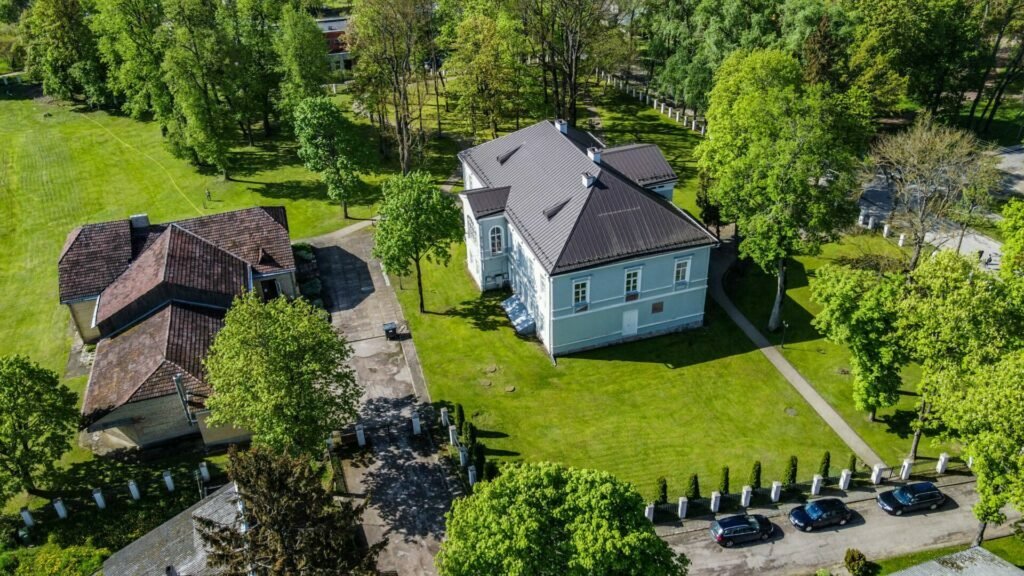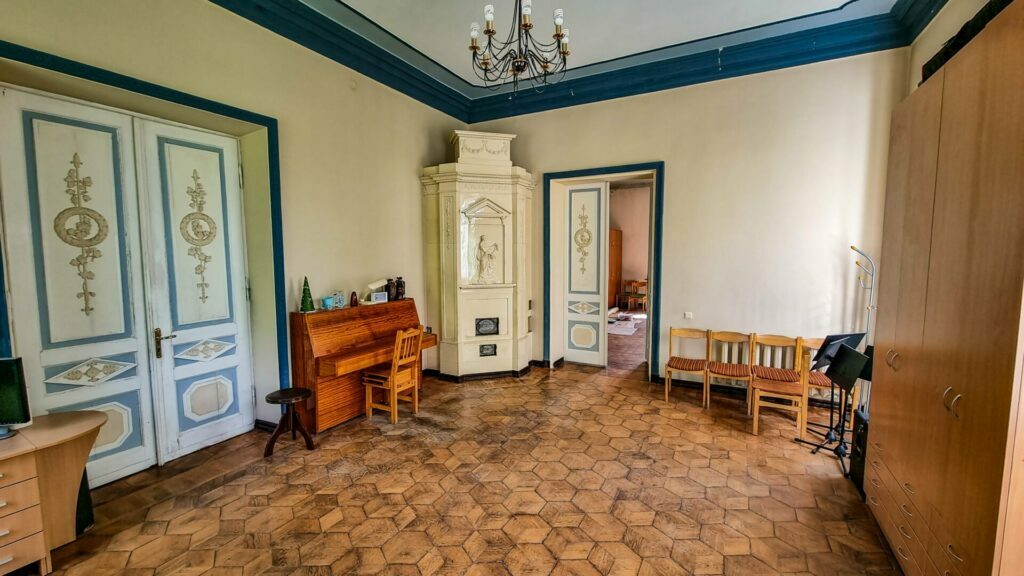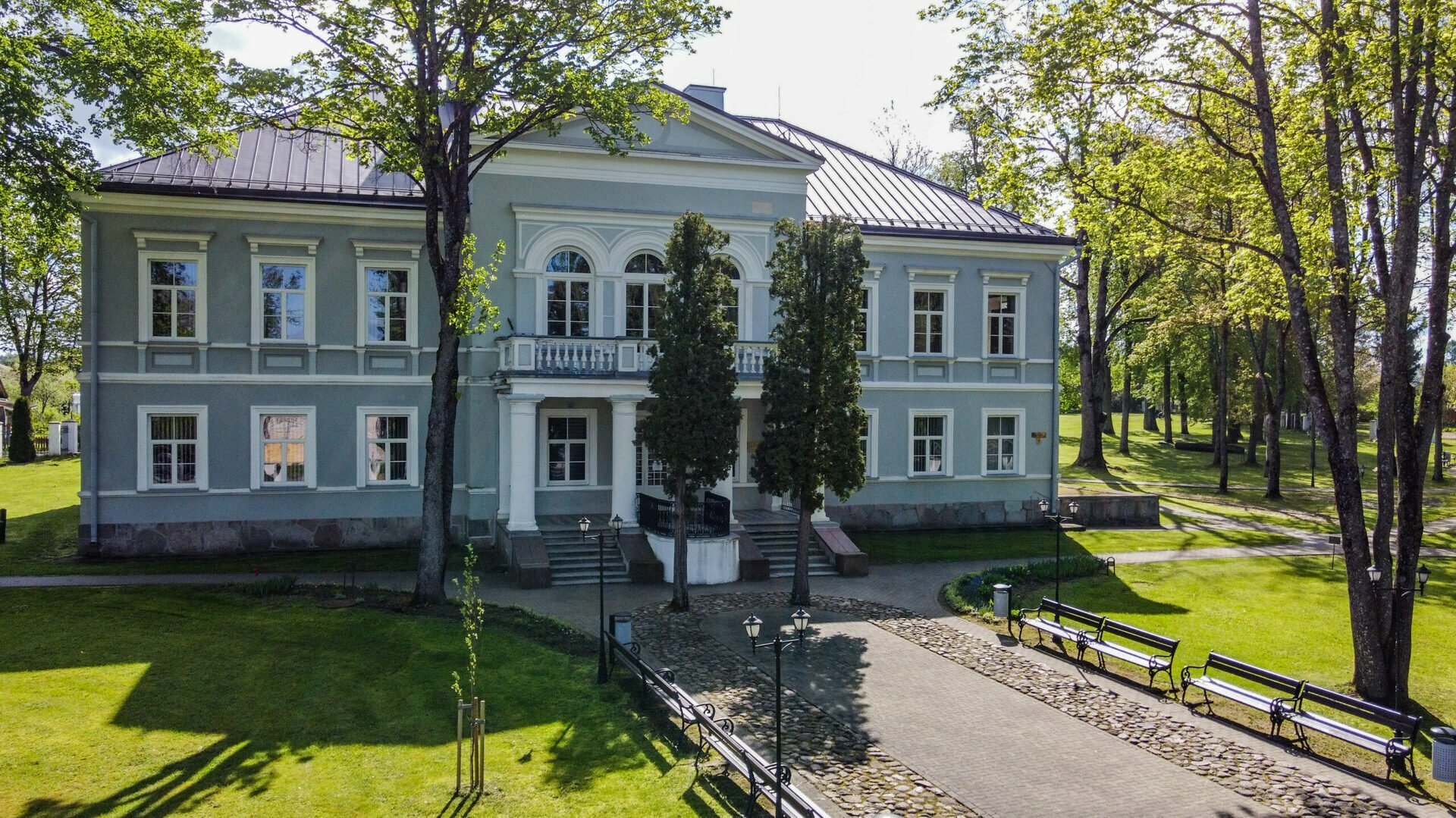Wagner Palace is another pearl of history and cultural heritage in south-eastern Lithuania. The impressive 19th-century neoclassical palace, restored in the town of Šalčininkai, has preserved fragments of the original interior decoration, the wood-burning stoves, and the Golden Hall. Today, the Wagner Palace is home to the Stanislav Moniuszko Art School, and a venue for exhibitions, literary evenings and meetings, and classical music concerts. The Golden Hall is recognised as one of the best chamber halls in Europe for its excellent acoustics. The Wagner Palace is surrounded by a beautifully landscaped environment, where you can freely visit, stroll, relax and admire the palace architecture. The palace park is open to visitors on weekdays.
 Šalčininkai Manor is mentioned in written sources as early as the 14th century. It was first owned by the noble Hlebowiczowie family (15th – 16th centuries) and later by the Chodkiewicz family (17th –18th centuries), before it was acquired by the Wagners, a family of Prussian land-owner background in 1835, and it was ruled by them until the end of the Second World War. Karl Wagner was an educated man, a graduate of Vilnius University, who had adopted the anti-secular sentiments of the university. He took part in the uprisings against Tsarism, was arrested and imprisoned in exile. Wagner brought a spirit of freedom and creativity to Šalčininkai Manor, which has been continued by his descendants – his son Algirdas (Olgierd), who built the neoclassical palace that has survived to the present day, and his grandson Vitoldas (Witold), who has applied his university knowledge to make the manor an exemplary model of a thriving farm.
Šalčininkai Manor is mentioned in written sources as early as the 14th century. It was first owned by the noble Hlebowiczowie family (15th – 16th centuries) and later by the Chodkiewicz family (17th –18th centuries), before it was acquired by the Wagners, a family of Prussian land-owner background in 1835, and it was ruled by them until the end of the Second World War. Karl Wagner was an educated man, a graduate of Vilnius University, who had adopted the anti-secular sentiments of the university. He took part in the uprisings against Tsarism, was arrested and imprisoned in exile. Wagner brought a spirit of freedom and creativity to Šalčininkai Manor, which has been continued by his descendants – his son Algirdas (Olgierd), who built the neoclassical palace that has survived to the present day, and his grandson Vitoldas (Witold), who has applied his university knowledge to make the manor an exemplary model of a thriving farm.
 The neoclassical manor house, which can still be seen today, was designed by the German architect Hetzschold. The interior of the palace was very luxurious. Only some authentic fragments of the palace interiors have survived to this day: the Golden Hall, and the tiled wood-burning stoves, because, unfortunately, like most Lithuanian manors, Šalčininkai Manor was devastated, plundered and abandoned during the war and the Soviet occupation. The library was stolen from the Wagner Palace during the Second World War, and works of art were looted. The façade and interior of the palace were destroyed through ill-informed reconstruction. In the post-war years, a hospital was established in the palace, followed by a music school, and finally the Stanislav Moniuszko School of Arts of Šalčininkai, which is still in operation today.
The neoclassical manor house, which can still be seen today, was designed by the German architect Hetzschold. The interior of the palace was very luxurious. Only some authentic fragments of the palace interiors have survived to this day: the Golden Hall, and the tiled wood-burning stoves, because, unfortunately, like most Lithuanian manors, Šalčininkai Manor was devastated, plundered and abandoned during the war and the Soviet occupation. The library was stolen from the Wagner Palace during the Second World War, and works of art were looted. The façade and interior of the palace were destroyed through ill-informed reconstruction. In the post-war years, a hospital was established in the palace, followed by a music school, and finally the Stanislav Moniuszko School of Arts of Šalčininkai, which is still in operation today.
 This article is a part of a project implemented within the framework of the Innovation of Tourism Services and Products Program, with funding from the Agency for Science, Innovation and Technology, and from funds allocated by the Ministry of Economy and Innovation of the Republic of Lithuania.
This article is a part of a project implemented within the framework of the Innovation of Tourism Services and Products Program, with funding from the Agency for Science, Innovation and Technology, and from funds allocated by the Ministry of Economy and Innovation of the Republic of Lithuania.


